Air Barriers
A Crash Course in Air Barriers
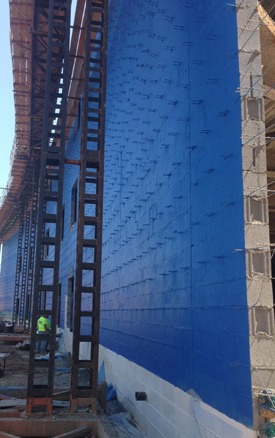 |
|
| Continuous air barrier prevents moisture laden air from penetrating the backup wall |
Air barriers are mandatory requirements in two standards and two codes (ASHRAE 90.1-2010, ASHRAE 189.1-11, 2012 IECC and 2012 IgCC). These codes and standards have become building or energy code requirements in a minimum of 12 states in the U.S. In Canada, air barrier systems are a requirement of the National Building Code of Canada (NBCC) and the National Energy Codes for Buildings, and have been adopted by the provinces and territories. Design professionals have worked hard and have come a long way to ensure air barriers are designed continuously across the entire building.
The different types of air barrier materials and their technologies have greatly increased in the last 20 years, giving Air Barrier Association of America (ABAA)-Certified Air Barrier Installers options for many different materials with which to work. Due to the nature of air barrier materials, masonry preparation is extremely critical to ensuring the material is installed properly.
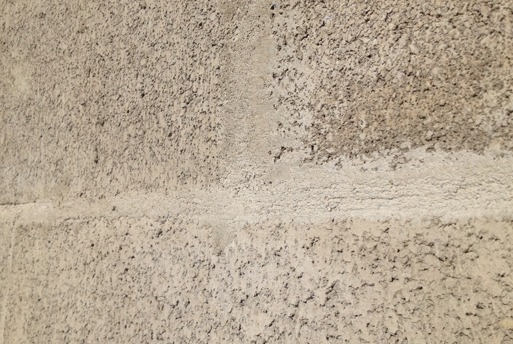
Shown is an air barrier transition at openings
Benefits of air barriers
By designing and installing a proper air barrier assembly, the building design and construction team will reduce conditioned air loss, saving energy during the life of the building. By installing a properly designed air barrier assembly, you reduce the chances for building enclosure failures as there will be fewer opportunities for air leakage causing condensation in the building enclosure. The air barrier assists the water resistive barrier in keeping bulk water that has made it was passed the cladding from entering the building enclosure. By reducing air leakage and associated drafts, occupants are more comfortable.
Air barrier continuity
Air barriers are important in buildings, and architects need to be diligent when designing them. Factors such as the ambient environment and the building use need to be considered during the design phase. Engineers need to ensure they have considered the strength and durability of each kind of material, based on loads of the building. It is critical that air barriers are designed continuously on all six sides of the building, ensuring penetrations are transitioned and sealed with all materials being installed in a shingle fashion down the wall.
The most common areas where continuity is critical and can be a major source of air leakage are at the wall-to-roof connection, and wall-to-window and wall-to-door openings. Air barrier contractors need to ensure that the air barrier is installed continuously and, if there are questions, they should clarify the detail with the design professional.
Who is installing air barriers?
We see all types of trades joining the ABAA to become accredited contractors to work on our projects, including masons, insulation contractors, waterproofing contractors, drywall contractors, roofing contractors and cladding contractors. We see many masons getting accredited and completing a number of ABAA projects. ABAA-certified air barrier installers are the best in the business, since they have the experience and the training that only ABAA can deliver to its clients.
Today’s progressive contractors are installing a wide range of building enclosure materials, which allows them to “own the wall.” By adding air barriers to the work that you already complete, you can offer better coordination of trades, increased quality of final wall assembly and increased profitability.
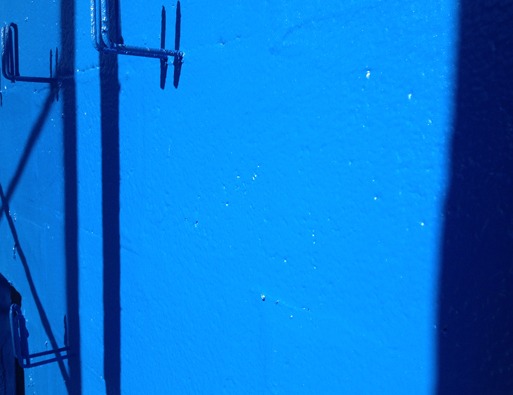
Shown is an example of continuity
Types of air barrier materials
There are many different types of air barriers on today’s market, including fluid-applied, self-adhered, mechanically fastened building wraps, spray polyurethane foam (SPF), insulating boardstock, flexible interior membranes and factory-bonded membranes to sheathing. Each of these materials has benefits to use within a building design and should be evaluated based on the design professional’s familiarity and the performance of each system.
Pre-cast concrete and masonry preparation
The preparation of masonry is critical to the installation of fluid-applied, self-adhered or SPF air barriers. Materials that adhered to the substrate (fluid-applied, self-adhered and SPF) need to be installed on substrates that are clean, dry, and free of contaminants that can affect the adhesion.
Air barrier installers need to be aware of the requirements for installation and the manufacturer’s requirements for moisture content of the substrate. Moisture content can be checked by using a moisture meter or with the plastic-sheet method described in ASTM D4263. When substrates have high moisture content, you may run the risk of having the material not adhere properly and/or moisture forming voids and pockets. On the face of the building as well as building corners, all masonry should be tight, interlaced and secure, with no gaps or openings.
CMU should have the joints tooled flush with the face of the block, and excess mortar scraped off. Brick ties have to be secure and have the mortar smooth around the tie. All blocks should be tight, secure and flush.
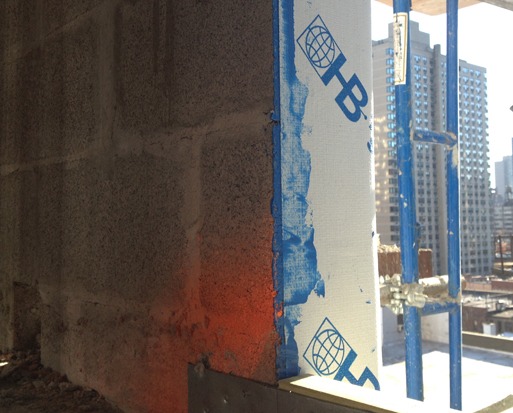
CMU joints must be flush with the wall face
Pre-cast concrete shall be free of release agents from formwork as adhesive type of air barrier materials may not bond. Concrete slurry should fill in any voids, honeycombing or cold joints that are not flush on the pre-cast concrete or masonry to ensure the air barrier materials can be well-bonded to it.
Air barrier installers have to be aware that each material has strict installation requirements. Self-adhered materials must be have primers installed correctly, the material needs to be rolled into place with a pressure roller (to make it free of air pockets) and have sealants installed at the termination. When installing fluid-applied materials, the installer needs to ensure the material is being applied at the manufacturer’s required thickness. Boardstock need to have the joints sealed to provide an air control layer, maintain the water control layer, and have the specified fasteners installed at the spacing required by the manufacturer.
Designing a continuous air barrier assembly to be installed by an ABAA-Accredited Contractor using ABAA-Certified Air Barrier installers has been recognized by the construction industry as providing a top-quality air barrier assembly. By designing the air barrier assembly so that it is continuous, choosing the correct material for your project, properly preparing the substrate and installing the material correctly, you can ensure that we build an energy-efficient building stock free of problems.
Visit ABAA at the World of Concrete, Jan. 20 – 24, 2014, in Las Vegas, where we will be demonstrating proper installation of air barrier assemblies at “Air Barrier Live – Presented by ABAA” in the North Hall. You can view our installer trainees installing air barrier materials in the ABAA training area in the Gold Lot, front of North Hall on Jan. 23, 2014. Air barrier installers also can register in the ABAA fluid-applied and self-adhered training course. To sign up for our training course or for more information, email abaa@airbarrier.org, visit www.airbarrier.org or call 866-956-5888.
| Product Watch |
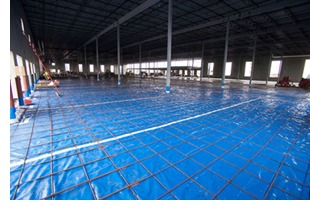 Strong Man Building Products Corp., a manufacturer of nettings and tarps for debris and weather enclosures, is expanding its product line with the addition of VaporBlock. The vapor retarder/barrier products are manufactured by Raven Industries and meet or exceed ASTM E-1745 requirements for water vapor retarders used in contact with soil or granular fill under concrete slabs. Strong Man Building Products Corp., a manufacturer of nettings and tarps for debris and weather enclosures, is expanding its product line with the addition of VaporBlock. The vapor retarder/barrier products are manufactured by Raven Industries and meet or exceed ASTM E-1745 requirements for water vapor retarders used in contact with soil or granular fill under concrete slabs.
VaporBlock is available through all Strong Man distributers.??The building products supplier will offer VaporBlock in the 10, 15 and Plus-20 formulas, as well as the product’s accessories. VaporBlock sets a high standard for vapor retarders/barriers. The product is manufactured from high-grade raw materials that are consistent in quality, unlike common construction grades of four-, six- or 10-mil. polyethylene that are produced with a high percentage of “post-consumer” recycled materials that cause inconsistencies in physical strength and permeability. In addition, the product’s high puncture resistance and tensile strength provide attributes vital in a vapor retarder/barrier. For more information, visit www.StrongMan.com. |